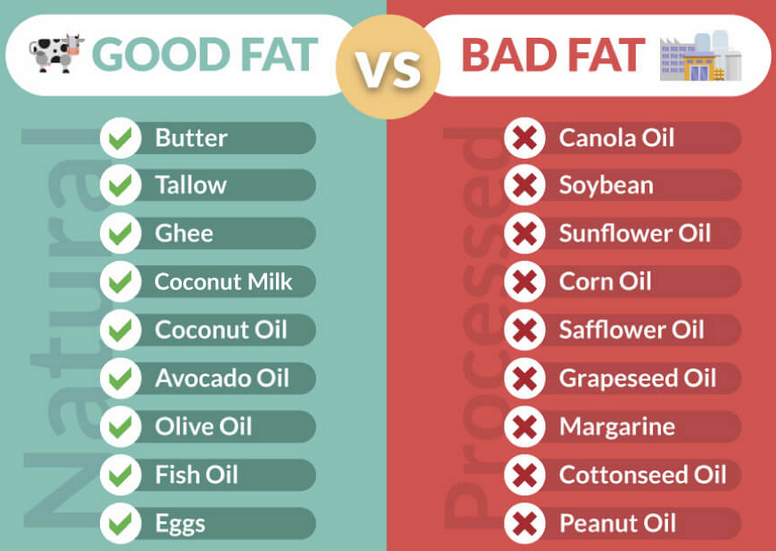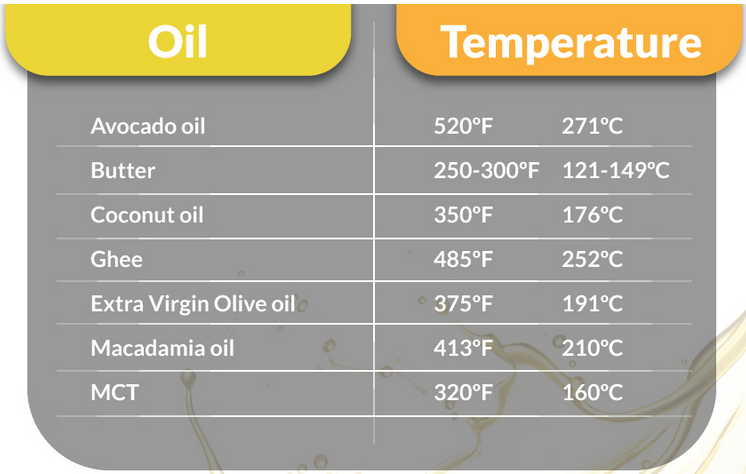|
Healthy fats are essential for good health. However, some fats can be extremely unhealthy. When using fats, it is important to differentiate between healing fats and toxic fats. Healing fats are nutritious fats that are anti-inflammatory and supply the body with energy and building blocks for different tissues. On the other hand, toxic fats are highly inflammatory and can contribute to a series of health problems. Learning which fats to stay away from and what healthy fats to incorporate in your diet may be one of the most important dietary strategies you implement into your life. Fat research is clear: Two recent studies completely debunked the arguments for a low-fat, high-carb diet. In an August 2017 study published in the Lancet, scientists concluded "a high carbohydrate intake was associated with an adverse impact on total mortality, whereas fats including saturated and unsaturated fatty acids were associated with lower risk of total mortality and stroke. We did not observe any detrimental effect of fat intakes on cardiovascular disease events". And, a September 5, 2017 study agreed, finding that a high-fat, low-carb ketogenic diet extends longevity and promotes health. Now here is the KEY: For fats to provide these health benefits, you must incorporate healing fats, rather than bad fats, into the diet. To do this you must first be able to identify healing fats and bad fats. It is also important to distinguish saturated and unsaturated fats, non-animal fats and animal fats, and fats for hot uses and fats for cold uses. Below is a simple list of some of the best healing fats. Healing non-animal fats:
Healing animal fats:
Healing fats provide building blocks for cell membranes and hormones. They also function as carriers for important fat-soluble vitamins such as vitamins A, D, E, and K and aid in the absorption of minerals. Healing fats are essential for a healthy body and lifestyle. Let’s look more closely at several healing fats. A Few Words About Omega 3 & 6 In short, boost 3 reduce 6! Omega-3 fatty acids are polyunsaturated fats found in fatty fish such as salmon and sardines. They are also found in walnuts and some seeds, such as chia seeds. They are liquid at room temperature. They reduce inflammation and lower the risk of chronic diseases including heart disease, cancer, and arthritis. Omega-3 fatty acids can help lower triglycerides and apoproteins (markers of diabetes), and raise HDL (“good” cholesterol) levels. Omega-3 fats are also essential for brain and eye health. When in the correct balance with omega-3 fats, omega-6 fats are healing fats. Like omega-3 fatty acids, omega-6 fatty acids are polyunsaturated fats. There are healthy and unhealthy sources of omega-6 fats. Healthy sources include sunflower seeds, wheat germ, sesame seeds, and walnuts. When eaten in the ideal ratio with omega-3 fats (between 4:1 and 1:1), these omega-6 fats promote health. NOTE: Unfortunately, most Americans follow the Standard American Diet (SAD) and consume a much larger amount of oxidized omega-6 fatty acids found in corn and soybeans. How To Cook With Oils Healthy Fat Bonus Another excellent way to add healing fats to your diet is to include them in smoothies. Healing fats that are delicious in smoothies include:
Worst Fats The most common sources of unhealthy fats are man-made saturated fats and highly processed unsaturated fats. Man-made saturated fats, including trans fats, are extremely harmful. Unsaturated processed oils, such as vegetable oil, canola oil and corn oil, oxidize easily and are never healthy.
0 Comments
Leave a Reply. |
Author
DannyTheCoach Archives
January 2023
Categories
All
|







 RSS Feed
RSS Feed